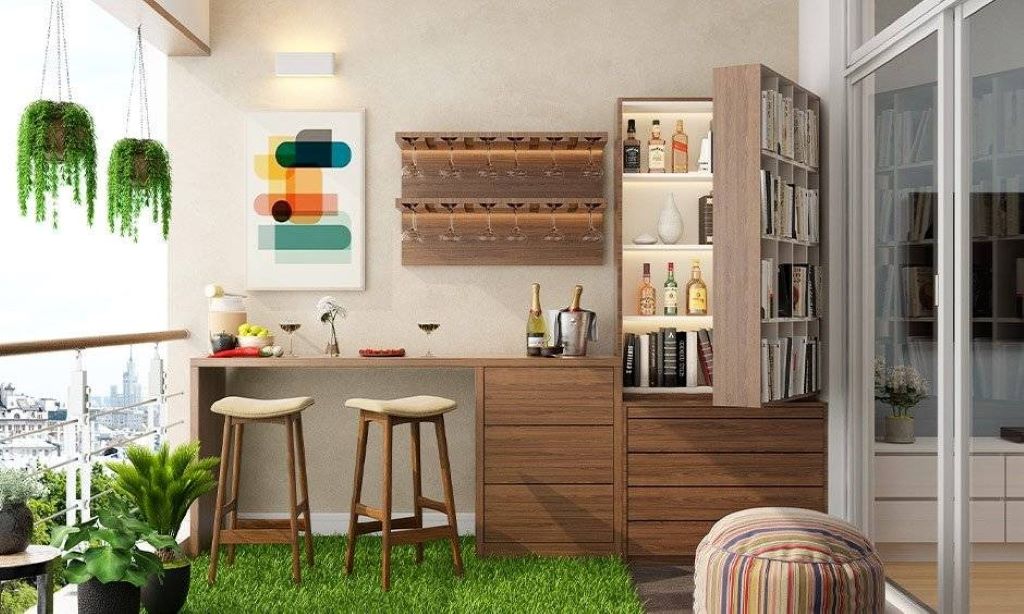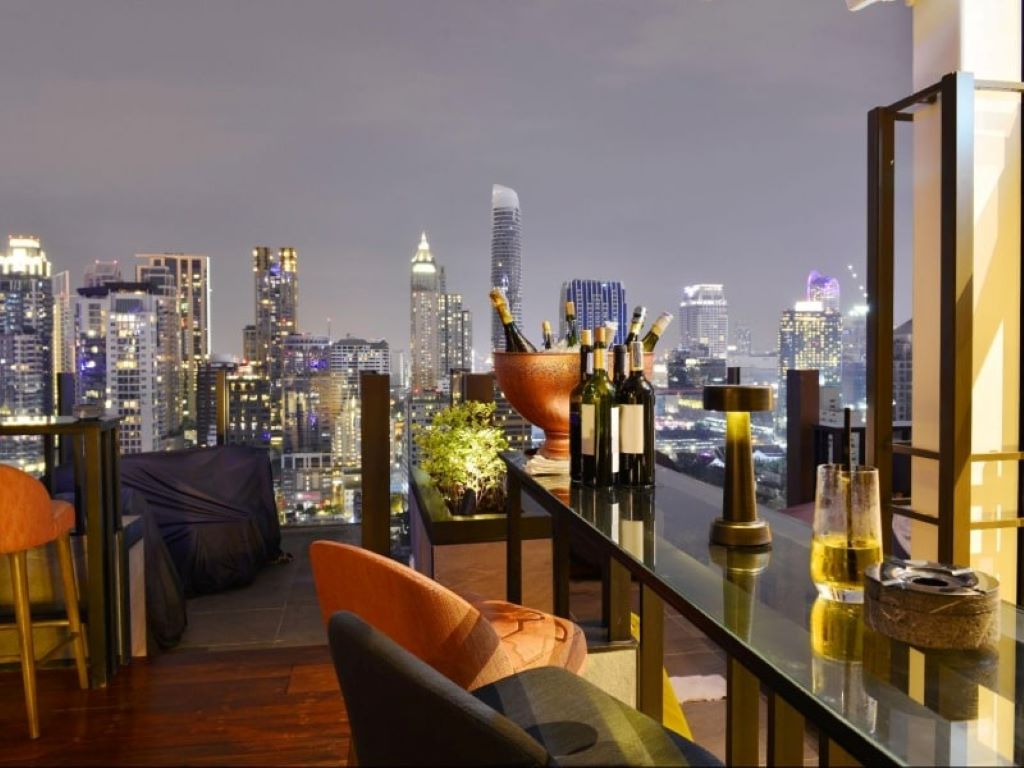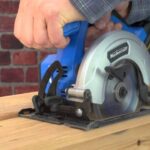
Imagine sipping a cocktail on your balcony, surrounded by a stylish, personalized bar you built yourself. With DIY balcony bar ideas, you can turn even the smallest outdoor space into a vibrant, functional entertainment hub. Whether you’re working with a cozy urban balcony or a spacious terrace, these projects blend creativity, practicality, and affordability. Drawing from design trends, expert insights, and real-world examples, this guide dives deep into crafting a balcony bar that elevates your home. From space-saving solutions to luxurious setups, we’ll explore every angle to help you create a bar that’s uniquely yours.
Why a DIY Balcony Bar is a Game-Changer for Your Home
A balcony bar isn’t just a place to serve drinks; it’s a lifestyle upgrade. According to a 2024 survey by Houzz, 62% of homeowners are prioritizing outdoor living spaces to enhance relaxation and socializing. A DIY bar maximizes your balcony’s potential, turning it into a multi-functional area for entertaining, unwinding, or even working remotely.
The Appeal of Personalization
Building your own bar lets you tailor every detail to your taste. Unlike store-bought furniture, a DIY project reflects your personality—whether it’s rustic charm or sleek modernity. Interior designer Maite Granda notes, “A balcony bar should feel like an extension of your indoor aesthetic, creating a seamless flow.” This customization also saves money. Pre-made outdoor bars can cost $500-$2,000, while DIY options can be completed for under $200 with the right materials.
Space Optimization for Small Balconies
Urban dwellers often face the challenge of limited space. A 2025 report from Apartment Therapy found that 78% of city apartment renters have balconies under 50 square feet. A DIY bar can be designed to fit these constraints, using foldable surfaces or wall-mounted shelves. This approach ensures functionality without sacrificing style, making every square inch count.
Boosting Property Value
A well-designed balcony bar can increase your home’s appeal. Realtor.com reports that outdoor upgrades, including entertainment areas, can yield a 50-75% return on investment when selling a home. A unique, handcrafted bar signals attention to detail, attracting buyers who value outdoor living.
Planning Your DIY Balcony Bar: Key Considerations
Before diving into construction, thoughtful planning ensures your bar meets your needs and withstands the elements. Here’s how to start.
Assessing Your Space
Measure your balcony’s dimensions and note structural elements like railings or walls. For example, a 4×6-foot balcony can accommodate a narrow bar table, while larger spaces might support an L-shaped counter. Consider sunlight exposure—south-facing balconies may need shade solutions like awnings, as UV rays can fade materials over time.
Choosing Durable Materials
Outdoor furniture faces rain, wind, and sun, so material choice is critical. Teak, cedar, and metal are top picks for durability, as noted by Architectural Digest. Teak resists rot naturally, lasting up to 20 years with minimal maintenance, though it’s pricier at $20-$30 per board foot. Cedar is more affordable ($10-$15 per board foot) and weathers well with sealant. For budget-conscious builders, repurposed pallets (often free from local warehouses) offer a rustic look but require thorough sanding to avoid splinters.
Setting a Budget
A DIY balcony bar can cost anywhere from $50 to $500, depending on materials and complexity. A simple railing-mounted bar might use $30 in lumber and brackets, while a full bar with storage and seating could hit $400 with premium finishes. Track expenses early to avoid overspending, and consider salvaged materials to cut costs.
Creative DIY Balcony Bar Ideas for Every Style
Here are five detailed ideas, each catering to different aesthetics and space constraints. Each includes step-by-step guidance, material suggestions, and expert tips.
1. The Space-Saving Railing Bar
Perfect for Tiny Balconies
For small spaces, a railing-mounted bar is a genius solution. The Spruce highlights this design for its simplicity and functionality, noting its popularity in urban apartments. A foldable railing bar can be installed in a weekend and costs under $100.
- Materials Needed: Plywood or cedar board (2×4 feet), two heavy-duty folding brackets ($15 each), weather-resistant screws, and outdoor paint or sealant.
- Steps:
- Cut the board to fit your railing width, typically 2-3 feet for small balconies.
- Sand and seal the wood to protect against moisture.
- Attach brackets to the underside of the board, ensuring they fold inward when not in use.
- Secure the board to the railing with screws, checking for stability.
- Paint or stain to match your balcony’s aesthetic.
- Expert Tip: Designer Elizabeth Drake suggests adding a ceramic garden stool ($50-$100) as a movable side table for extra versatility. “It’s durable and doubles as seating,” she says.
- Pros and Cons: This design maximizes floor space and is budget-friendly, but it offers limited surface area for serving multiple guests. Some argue it feels less permanent, though its foldable nature is ideal for renters.
2. The Rustic Pallet Bar
Ideal for Budget-Conscious DIYers
Repurposed pallets create a trendy, eco-friendly bar with a rustic vibe. A 2025 Pinterest trends report shows a 35% surge in searches for pallet furniture, reflecting its popularity. This project can be completed for $50-$150.
- Materials Needed: Two wooden pallets, sandpaper, outdoor varnish, L-brackets, screws, and optional concrete blocks for elevation.
- Steps:
- Source free pallets from local businesses (check for “HT” stamp to ensure they’re heat-treated and safe).
- Sand thoroughly to remove splinters and apply varnish for weather resistance.
- Stack pallets vertically for a taller bar or horizontally for a wider surface.
- Secure with L-brackets and screws for stability.
- Add a plywood or reclaimed wood top for a smooth serving surface.
- Expert Tip: “Incorporate Edison bulb string lights for ambiance,” suggests Molly Torres Portnof of Date Interiors. They cost $20-$40 and enhance evening gatherings.
- Pros and Cons: Pallets are cheap and sustainable, but they require significant prep to look polished. Critics note that untreated pallets may degrade faster, so sealing is non-negotiable.
3. The Modern Minimalist Bar Cart
Sleek and Mobile
A rolling bar cart offers flexibility, letting you move your bar indoors or out. This design suits modern aesthetics and costs $150-$300. Houzz reports that 48% of homeowners prefer mobile outdoor furniture for its versatility.
- Materials Needed: Metal or wooden frame, two wooden shelves (18×36 inches), four caster wheels, outdoor paint, and screws.
- Steps:
- Build a rectangular frame using metal pipes or pre-cut lumber.
- Attach two shelves, spacing them 18 inches apart for storage.
- Install caster wheels with locks for mobility and stability.
- Paint with weather-resistant enamel for a sleek finish.
- Add hooks or racks for bar tools and glassware.
- Expert Tip: “Use Sunbrella fabric for any cushions or covers,” says designer Tiffani Baumgart. “It resists fading and mildew, perfect for outdoor use.”
- Pros and Cons: Mobility is a major plus, but carts take up more floor space. Some argue they’re less sturdy in high winds, so ensure wheels lock securely.

4. The Built-In Corner Bar
Maximizing Larger Spaces
For spacious balconies, a built-in corner bar creates a permanent, luxurious setup. This project, costing $300-$500, is ideal for homeowners aiming for a high-end look. Architectural Digest praises corner bars for their ability to “anchor” outdoor spaces.
- Materials Needed: Cedar or teak planks, concrete blocks or metal frame for the base, countertop material (tile or butcher block), and outdoor sealant.
- Steps:
- Design an L-shaped frame to fit your balcony’s corner, typically 4×4 feet.
- Build a base with concrete blocks or metal for durability.
- Attach wooden planks for the bar’s exterior, ensuring a snug fit.
- Install a countertop, securing with adhesive or screws.
- Seal all surfaces and add bar stools for seating.
- Expert Tip: Bryan Yates of Yates Desygn recommends integrating a small sink ($100-$200) for convenience, especially for frequent entertainers.
- Pros and Cons: This bar feels upscale and permanent, but it’s costly and less feasible for renters. Some argue it reduces balcony flexibility, though its aesthetic appeal is unmatched.
5. The Upcycled Crate Bar
Creative and Compact
Repurposed wooden crates offer a quirky, budget-friendly bar for $75-$200. The Spruce showcased a crate-based balcony bar for its storage potential and charm, ideal for eclectic decor lovers.
- Materials Needed: Four wooden crates, plywood top, screws, outdoor paint, and optional cushions for seating.
- Steps:
- Stack crates in a rectangular or square formation, open sides facing out for storage.
- Secure crates with screws for stability.
- Attach a plywood top, sanded and sealed, as the bar surface.
- Paint in vibrant colors to match your balcony’s palette.
- Add a cushion on one crate for impromptu seating.
- Expert Tip: “Incorporate stackable flower baskets for a vertical herb garden,” suggests designer Jessica Bunge. Fresh herbs like basil or mint enhance cocktails and decor.
- Pros and Cons: This design is affordable and storage-rich, but crates may not withstand harsh weather without robust sealing. Critics note it can look makeshift, so precise craftsmanship is key.
Enhancing Your Balcony Bar: Design and Functionality Tips
A great bar is more than a counter—it’s an experience. Here’s how to elevate your DIY project with thoughtful additions.
Lighting for Ambiance
Outdoor lighting sets the mood. A 2024 Home Depot study found that 67% of homeowners prioritize lighting for outdoor entertaining. Solar-powered string lights ($15-$50) are eco-friendly and cost-effective, while LED strip lights ($20-$60) add a modern touch under the bar counter. Designer Molly Torres Portnof emphasizes, “Lighting should be warm and inviting, avoiding harsh fluorescents.”
Storage Solutions
Maximize functionality with storage. Wall-mounted shelves or under-counter racks keep barware organized without cluttering the space. For small balconies, foldable storage bins ($10-$30) are a renter-friendly option. “Storage is critical for small spaces,” says Maite Granda. “It keeps the bar functional without sacrificing style.”
Weatherproofing Strategies
Protect your investment with weatherproofing. Apply marine-grade sealant ($20 per quart) to wooden surfaces for UV and water resistance. For textiles, Sunbrella or similar performance fabrics ($10-$20 per yard) prevent fading. Covers for furniture, as suggested by Tiffani Baumgart, extend lifespan by 30-50%, per a 2025 Outdoor Living report.
Adding Personal Touches
Incorporate elements that reflect your style, like colorful tiles, painted patterns, or custom coasters. A 2025 Pinterest trend analysis shows a 40% rise in searches for personalized outdoor decor, indicating a demand for unique spaces. “Art on a balcony, like a small sculpture or wall piece, adds personality,” says Bryan Yates.
Budget vs. Luxury: Balancing Cost and Quality
Not all DIY bars need to break the bank, but investing in quality materials pays off. Here’s how to balance cost and durability.
- Budget Approach: Use pallets, crates, or reclaimed wood to keep costs under $100. Focus on simple designs like railing bars or crate setups. Seal thoroughly to extend lifespan.
- Luxury Approach: Opt for teak or metal frames with high-end finishes like butcher block or tiled countertops. Budget $300-$500 for a polished, long-lasting bar. Adding features like a sink or built-in cooler elevates the experience but increases costs.
- Expert Opinion: Designer Elizabeth Drake argues, “A budget bar can look high-end with careful craftsmanship and bold accents.” Conversely, some DIYers prioritize durability over aesthetics, citing frequent maintenance as a drawback of cheap materials.
Common Mistakes to Avoid
Even seasoned DIYers make errors. Here are pitfalls to dodge, backed by expert insights:
- Ignoring Weather Resistance: Untreated wood warps within a year, per a 2024 Bob Vila report. Always seal or choose weatherproof materials.
- Overcomplicating Designs: Complex builds require advanced skills and tools, deterring beginners. Start simple, as advised by The Spruce.
- Neglecting Safety: Unstable bars pose risks, especially on elevated balconies. Ensure secure mounting, as emphasized by Yates Desygn.
- Skipping Measurements: A poorly sized bar disrupts balcony flow. Measure twice, as 80% of DIY failures stem from miscalculations, per a 2025 DIY Network study.
FAQs About DIY Balcony Bars
Q: How much space do I need for a balcony bar?
A: A bar can fit in as little as 2×3 feet for a railing-mounted design. For larger setups, aim for 4×4 feet or more, depending on seating and storage needs. Measure your balcony to ensure accessibility.
Q: What’s the cheapest way to build a balcony bar?
A: Use free pallets or crates, costing $50-$100 with sealant and hardware. Sand and seal thoroughly to extend durability, and repurpose existing items like stools for seating.
Q: Can I build a bar without power tools?
A: Yes, opt for pre-cut lumber or crates and use hand tools like screwdrivers or a manual saw. Folding brackets simplify assembly, making projects renter-friendly.
Q: How do I make my bar weather-resistant?
A: Use teak, cedar, or metal, and apply marine-grade sealant. Cover furniture during off-seasons, and choose performance fabrics like Sunbrella for cushions.
Q: Are DIY balcony bars safe for high-rise apartments?
A: Yes, if properly secured. Use heavy-duty brackets or screws, and check local building codes. Consult a professional for permanent installations on high floors.
Conclusion: Craft Your Perfect Balcony Bar
A DIY balcony bar transforms your outdoor space into a haven for relaxation and entertaining. Whether you choose a sleek railing bar, a rustic pallet setup, or a luxurious built-in corner bar, these projects blend creativity with functionality. By planning carefully, selecting durable materials, and adding personal touches, you’ll create a bar that’s both practical and stunning. Start small, avoid common pitfalls, and let your balcony reflect your unique style. Ready to sip cocktails under the stars? Grab your tools and turn your DIY balcony bar ideas into reality.
References:
- Architectural Digest, “15 Creative Balcony Ideas to Inspire Your Alfresco Sanctuary”
- The Spruce, “27 Small Apartment Balcony Ideas With Big Style”
- Houzz, “2024 Outdoor Living Trends Report”
- Apartment Therapy, “2025 Urban Living Survey”
- com, “Outdoor Upgrades ROI Analysis”
- Pinterest, “2025 Home Decor Trends Report”
- Home Depot, “2024 Outdoor Lighting Study”
- Bob Vila, “2024 DIY Outdoor Furniture Guide”
- DIY Network, “2025 Common DIY Mistakes Report”
Read More:
Window and Door Revival: Enhancing Curb Appeal and Energy Efficiency
Fence Lattice Without Posts: DIY Guide for Enhanced Privacy & Curb Appeal




